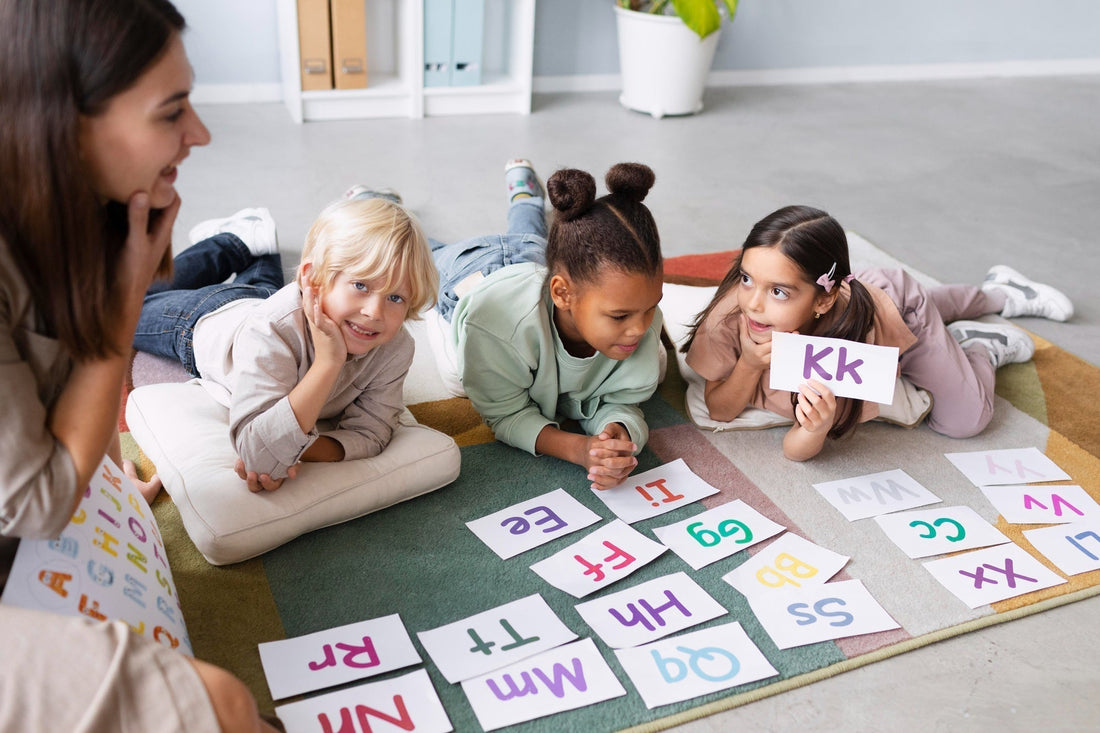
Growth Mindset vs. Fixed Mindset: Teaching Kids to Embrace Challenges
How to Foster a Growth Mindset in Children with Learning Differences
As a teacher, I’ve seen children with dyslexia, ADHD, and other learning challenges light up when they realize: “I can do this—I just need more time and practice.” That moment of confidence often matters more than the worksheet or test score in front of them.
For children with learning differences, their mindset, the way they view their abilities, can shape both academic success and emotional resilience. Research from psychologist Carol Dweck and organizations like the International Dyslexia Association shows that fostering a growth mindset helps children persist, reduce frustration, and build lifelong confidence.
What Is a Growth Mindset?
A growth mindset is the belief that abilities and intelligence can be developed through effort, practice, and support.
Characteristics of a growth mindset include:
✔ Sees challenges as opportunities to grow
✔ Believes effort leads to improvement
✔ Keeps trying new strategies when something feels difficult
✔ Bounces back from mistakes with persistence
✔ Values progress over perfection
📌 Example: A child who struggles with letter sounds might say: “I haven’t learned this yet, but I will if I keep practicing.”
👉 Related: The Emotional Side of Dyslexia: Protecting Your Child’s Self-Esteem.
What Is a Fixed Mindset?
A fixed mindset is the belief that abilities are “set in stone”—you’re either good at something or you’re not.
Signs of a fixed mindset include:
🚩 Avoids challenges for fear of failure
🚩 Believes effort won’t change outcomes
🚩 Gives up quickly when something is hard
🚩 Feels threatened by others’ success
🚩 Seeks validation instead of learning from mistakes
📌 Example: A child struggling with spelling might say: “I’ll never be good at this.”
Why Mindset Matters for Kids with Learning Differences
For children with dyslexia, ADHD, or processing challenges, mindset can be the difference between giving up and trying again.
✔ Encourages persistence – Kids often need more time and repetition; a positive mindset keeps motivation alive.
✔ Reduces frustration and anxiety – Belief in improvement helps them reframe struggles.
✔ Promotes problem-solving – Instead of avoiding challenges, children are more likely to try new strategies and ask for help.
👉 Related: How to Support a Child with Dyslexia at Home.
5 Ways to Teach Kids a Growth Mindset
1. Praise Effort, Not Just Results
Children with a fixed mindset focus on being “right.” Instead, emphasize effort and improvement.
✔ Try saying:
✅ “I love how you kept trying!”
✅ “You practiced a lot, and it really shows.”
✅ “Look how much progress you’ve made.”
📌 Example: If your child recognizes one new letter today, celebrate it, even if they don’t know the whole alphabet yet.
2. Use the Power of “Yet”
Adding the word yet changes “I can’t do this” into “I can’t do this yet.”
🚫 “I can’t read this.”
✅ “I can’t read this yet, but I will if I keep practicing.”
3. Reframe Mistakes as Opportunities
Mistakes aren’t failures, they’re stepping stones.
✔ Try:
✅ “Mistakes help your brain grow.”
✅ “What can we learn from this?”
✅ “Let’s try a different way next time.”
📌 Example: If your child writes a letter backward, say: “Let’s try again together, look how the card shows the letter’s shape.”
4. Encourage Hands-On, Multisensory Learning
Children with learning differences often thrive when they can see, feel, and move through learning.
✔ Why it works:
-
Builds confidence by using different strengths
-
Makes learning less stressful and more fun
-
Reinforces memory by engaging multiple senses
📌 Example: Using textured alphabet cards, children can trace letters, watch their mouth movements in a mirror, and pair sounds with actions—all of which make progress feel tangible.
👉 Related: Early Signs of Dyslexia Every Parent Should Know.
5. Model Growth Mindset Yourself
Kids mirror what they see. Show them that even adults are still learning.
✔ Try:
✅ “I don’t know this yet, but I’m learning.”
✅ “Oops, I made a mistake. That’s okay, mistakes help me grow.”
✅ Share your own story of persistence: “When I was learning how to… I had to practice many times before I got it.”
Bonus: Affirmations That Build a Growth Mindset
Positive self-talk helps kids internalize growth-oriented thinking.
✨ Download our free Positive Affirmation Cards to practice daily confidence-building phrases with your child. These are designed to encourage resilience and remind kids: “I can grow. I can improve. I can learn.”
Final Thoughts
A growth mindset is one of the most powerful tools we can give children with dyslexia, ADHD, or other learning differences. By praising effort, normalizing mistakes, using multisensory learning, and modeling persistence, we help kids see themselves as capable learners who can grow with practice.
At Soaring Minds, our mission is to make learning accessible, encouraging, and empowering. Through resources like the Multisensory ABC Literacy Kit and free tools like our affirmation cards, we aim to help families nurture both literacy andconfidence.
👉 For more strategies, explore:
